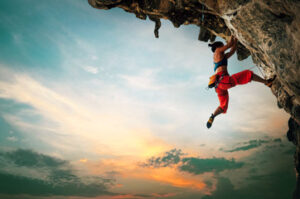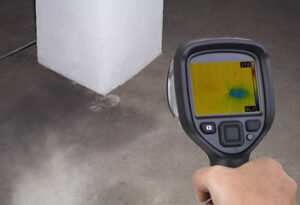Rock climbing re-establishes your connection to Mother Nature. Bouldering, a form of rock climbing that does not require safety ropes, requires balance technique and strength, as well as intense focus.

While all physical exercise is good for the mind and body, rock climbing provides unique mental health benefits. Taking part in your first bouldering competition can be transformative! Read on Alta Boulders for more information.
Bouldering is a pure, absorbing and intense form of climbing that challenges both your physical strength and mental resilience. Without the added safety net of ropes, it can be a highly dangerous sport. It requires complex sequences of moves, dynamic leaps, and dexterous balancing acts to complete a problem. It’s also a fantastic full body workout, with particular emphasis on core and footwork. Plus, it builds a strong physique that focuses on the biceps and forearms, as well as the rarer, less-used muscles like the rotator cuffs and inner thighs.
Boulder competitions can push climbers to a new level, as the intense pressure to perform forces them to shut out all other thoughts and fully focus on the task at hand. This intense focus can be mentally taxing, but it’s essential to the success of any climber, especially in a competitive environment. The diverse and unpredictable problems in boulder competitions challenge climbers to adapt quickly, enhancing their problem-solving skills.
The solitary nature of bouldering can be appealing for some climbers, as it fosters self-reliance and internal motivation. It also promotes a greater awareness of one’s own limits, which can help prevent taking unnecessary risks. However, this solitary nature can be challenging for some climbers who prefer to have others present to offer support and encouragement.
Competitions in Bouldering allow climbers to meet people with a shared passion for the sport, fostering a sense of community and camaraderie. In addition to promoting social interaction, the competitive atmosphere can be a great motivator to improve and progress.
The Thrill of Competition in Bouldering is an experience that can be enjoyed by climbers of all ages, bodies, and fitness levels. The competition format allows you to compete against climbers of the same ability, ensuring that everyone has a chance to succeed and feel proud of their achievements. It’s important to remember that the elation of victory isn’t about who won, but rather that you challenged yourself to try something new and succeeded! KAYA competitions are designed to be fun and fair for all competitors, with a selection of rad prizes being awarded in each flight.
The Community
Bouldering is a sport that draws people of all ages and backgrounds. Its relative simplicity – all you need are climbing shoes and chalk – makes it affordable and accessible for anyone interested in the challenge of pushing their physical limits. The social component of the sport is also a major draw, with climbers of all skill levels sharing tips, cheering each other on, and celebrating successes together.
Aside from being a fun way to spend time with friends, bouldering provides an immersive and challenging workout that strengthens muscles and improves flexibility. It also helps develop problem-solving skills, which are vital for any type of physical activity.
The mental challenges of bouldering provide a unique element that sets it apart from other forms of exercise. The difficulty of a route can vary dramatically, from eye-wateringly hard to delightfully easy. Each problem presents a unique puzzle that requires an integrated use of strength, balance, and technique to solve. It’s this blend of physical and cognitive training that makes bouldering so enticing.
It’s no wonder that so many people are drawn to this popular and rapidly growing activity. Unlike roped climbing, which often requires more advanced equipment, bouldering is an accessible and inclusive sport for people of all ages and body types. While injuries do happen, they are typically less serious than those that occur with other activities.
When you’re ready to start learning to boulder, you can do so independently or with the help of a mentor. For the self-learner, there are countless online resources available that can help you understand climbing techniques and practice them. In addition, watching more experienced climbers is a great way to pick up new moves and build your confidence.
One of the great things about bouldering is that you can enjoy the sport with your whole family. It is a great bonding activity that encourages teamwork and communication, especially when it comes to belaying. While climbing is a highly individual sport, it can be a lot of fun to try out new routes with a group of people.
The Challenge
Bouldering strips away much of the preparation and equipment required for roped climbing, allowing climbers to focus on movement and technique. The minimal requirements—just a pair of climbing shoes, chalk, and a crash pad—make it an accessible entry point for newcomers to the sport. The discipline is also deeply rooted in the community as a social activity, with climbers frequently sharing advice, cheering each other on, and celebrating successes together. The community-focused nature of the sport is a major contributor to its appeal, as it fosters a supportive atmosphere that enhances the overall experience.
While there are many misconceptions about bouldering, the sport is a safe and rewarding experience for people of all ages and fitness levels. The risk of injury is low when using appropriate safety measures, such as scouting the area beforehand, establishing proper landing zones and placing crash pads, and remaining within one’s personal climbing limit. Regular practice and a focused approach to learning can yield significant improvements in strength, skill, and confidence.
In addition to physical demands, bouldering challenges the mind by encouraging climbers to analyze movement and problem-solve. This cognitive training provides a holistic workout that benefits the body and the brain more effectively than traditional exercises, which tend to target isolated muscle groups.
Climbers must rely on their strength, agility, and problem-solving abilities to navigate routes that often require dynamic leaps, delicate balancing acts, and powerful maneuvers. The immediacy of the activity creates a visceral sense of intensity that engages the senses and challenges mental fortitude.
The challenge of overcoming obstacles and climbing a difficult problem is an exhilarating experience, especially when faced with the pressure of competing against others. While it is natural to feel nervous during a competition, the exhilarating rush of trying to perform your best in a tense situation can fuel a growth mindset and motivate you to achieve your goals.
It takes time to learn and master climbing techniques, so it’s important to be patient and give yourself a chance to improve. Practicing regularly and learning from more experienced climbers are two great ways to build confidence and skills. Maintaining a journal of progress and setbacks can also help keep track of your achievements and serve as a motivational tool to tackle tough problems.
The Victory
The last few minutes of a competition are the most nerve-wracking and exciting. Climbers know the stakes are high and can feel the eyes of the crowd on them as they approach the final boulder. The pressure to send can be a little daunting, but the best climbers have a way of shutting that out and focusing solely on the task at hand. This is what separates the great from the good – the ability to hone in on the problem and not get distracted by all of the outside noise and distractions.
As night fell over Brixen, America’s Natalia Grossman put on a sport climbing masterclass and won yet another women’s IFSC World Cup Bouldering title. Nobody could catch her despite a few hiccups, including a heart-stopping last move on the second boulder that could have been a game-changer.
The Angler is a classic in Joe’s Valley, Utah – to many climbers it is the ideal boulder problem. It has all of the elements that make a great boulder: the movement is interesting and challenging, the route is beautifully designed, and the rock features are aesthetically pleasing. The move on the last boulder in particular was a classic of high-end bouldering – a dynamic, jumpy movement to a far-out hold with only one foot able to hold on to it. Climbers love that sort of thing – to see the re-balancing, the yoga-like stretches and body postures, the careful movement that makes the sport so fun and intriguing.
Brooke Raboutou was the other top in the bouldering round, but only managed to top 2 of the 4 boulders. That left her in a tie with Janja Gardiner, who won both bouldering and lead in the event, so a few more tops would have clinched it for her.
There’s still a lot to play for as the Olympic season heats up, with a few more bouldering World Cup victories likely to give Gardiner and Grossman the lead over the field. Both are seasoned lead and bouldering competitors so will have a chance to win an Olympic medal in both disciplines, which will be a huge accomplishment. Hopefully by the time the 2028 Olympics rolls around speed, bouldering and lead will all have their own individual medals instead of being combined like they currently are.
